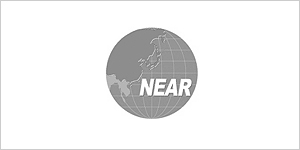The hub of exchange & cooperation in Northeast Asia
Member Regional Governments
-
 China
China
-
 Japan
Japan
-
 South Korea (ROK)
South Korea (ROK)
- Introduction
- Busan Metropolitan City
- Daegu Metropolitan City
- Incheon Metropolitan City
- Gwangju Metropolitan City
- Daejeon Metropolitan City
- Ulsan Metropolitan City
- Sejong Special Self-Governing City
- Gyeonggi-do Province
- Gangwon State
- Chungcheongbuk-do Province
- Chungcheongnam-do Province
- Jeongbuk State
- Jeollanam-do Province
- Gyeongsangbuk-do Province
- Gyeongsangnam-do Province
- Jeju Special Self-Governing Province
-
 North Korea (DPRK)
North Korea (DPRK)
-
 Mongolia
Mongolia
- Introduction
- Ulaanbaatar City
- Arkhangai Province
- Bayan-Ulgii Province
- Bayankhongor Province
- Bulgan Province
- Govi-Altai Province
- Govisumber Province
- Darkhan-Uul Province
- Dornod Province
- Dornogovi Province
- Dundgovi Province
- Zavkhan Province
- Orkhon Province
- Uvurkhangai Province
- Umnugovi Province
- Sukhbaatar Province
- Selenge Province
- Tuv Province
- Uvs Province
- Khovd Province
- Khentii Province
- Khuvsgul Province
- Culture & Tourism
-
 Russia
Russia
- Introduction
- Republic of Buryatia
- Republic of Sakha(Yakutia)
- Republic of Tuva
- Altai Region
- Zabaikalsky Territory
- Krasnoyarsk Territory
- Primorsky Territory
- Khabarovsk Territory
- Amur Region
- Irkutsk Region
- Kamchatka Territory
- Magadan Region
- Sakhalin Region
- Tomsk Region
- Kemerovo Region
- Republic of Khakassia
- Republic of Altai
-
 Associate member
Associate member
-
 Observer
Observer

- NationJapan
- Government NameHyogo Prefecture
- GovernorSaito Motohiko
Symbol

Emblem

Tree
Camphor tree

Bird
Oriental White Stork

Flower
Chrysanthemum Japanese
History
- Hyogo has played a key role in developing transportation routes on land and bysea, and prospered from domestic and international exchange.
- Since the opening of the Port of Kobe in 1868, Hyogo has been a gateway to the world, serving as a center of international trade and a hub for international exchange.
- In 1180, near the end of the Heian Period, Emperor Antoku, Taira no Kiyomori and the Imperial court moved briefly to Fukuhara, in what is now the city of Kobe. There the capital remained for five months.
Topographic Features
- Hyogo Prefecture extends from the Japan Sea (East Sea) in the north to the Seto Inland Sea in the south, and further down to the Pacific Ocean through Awaji Island.
- Hyogo Prefecture contains a rich variety of communities ranging from large cities to rural villages as well as isolated islands, and has several diversified climatic and natural features. Various leisure activities can be enjoyed here, including swimming, skiing, and bathing in numerous hot springs.
- Hyogo Prefecture has become known as a Japan in Miniature. The Prefecture consists of five highly distinctive districts: Settsu (Kobe and Hanshin), Harima, Tajima, Tamba, and Awaji, each of which has its own unique history, climate, and industries.
Basic Information
| Contents | |
|---|---|
| Geography/Climate |
|
| Population |
|
| Major events |
|
| Tourist Attractions |
|
| Sisterhood & Friendship Provinces / Cities |
|
Economic Status
| Contents | |
|---|---|
| Economy |
|
| Industry |
|
| Products |
|
Others
- Contact:International Relations Division
- Address: 兵庫県 神戸市 中央区 下山手通5-10-1
- Tel.:+81-78-362-3025
- Fax.:+81-78-362-3961
- Official Website : http://web.pref.hyogo.lg.jp/index.html









